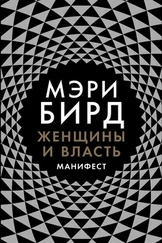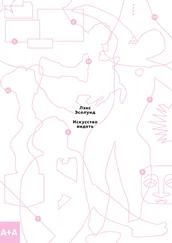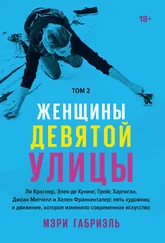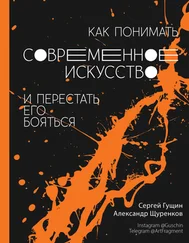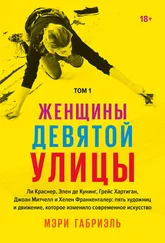Lee Krasner, interview by Barbara Rose, 1972, AAA-SI, 1; Lee Krasner, interview by Barbara Novak, AAA-SI, 12; Levin, Lee Krasner , 75–76; Landau, Lee Krasner: A Catalogue Raisonné , 302; Robert Hobbs, Lee Krasner (1993), 17.
Levin, Lee Krasner , 75–76; oral history interview with Harold Rosenberg, AAA-SI; B. H. Friedman, Jackson Pollock: Energy Made Visible , 69.
Oral history interview with Ludwig Sandler, AAA-SI; Lee Krasner, interview by Barbara Novak, AAA-SI, 11–12; Marquis, Art Czar , 134; «Abstract Expressionism: A Tribute to Harold Rosenberg», 9. Сол Беллоу сказал о Гарольде: «Я знал, что встретил самого значимого человека, который, однако, вел себя совсем не так, как ведут себя такие люди… [у него был] до абсурдного будничный взгляд на самого себя…»
«Abstract Expressionism: A Tribute to Harold Rosenberg», 9; Sandler, A Sweeper Up After Artists , 182; Marquis, The Art Biz , 124.
Natalie Edgar, interview by author, January 20, 2014; Mark Stevens and Annalyn Swan, De Kooning , 222; Gruen, The Party’s Over Now , 172.
Lee Krasner, interview by Barbara Novak, AAA — SI, 12.
Chandler Brossard, ed., The Scene Before You , 20; Lionel Abel, The Intellectual Follies , 34–35; Howard Zinn, A People’s History of the United States , 386. По словам Зинна, Джон Кеннет Гэлбрейт обвинял в этом «нездоровые корпоративные и банковские структуры», «невыгодную внешнюю торговлю», «экономическую дезинформацию» и «неправильное распределение доходов». Зинн утверждает: «Пять процентов самых состоятельных людей получали около трети всех доходов населения».
Peter Clements, Prosperity, Depression and the New Deal , 101–3, 132; Mauritz A. Hallgren, Seeds of Revolt , 271; Isabel Leighton, ed., The Aspirin Age , 286.
Hallgren, Seeds of Revolt , 48, 53–54, 64–65, 81, 118, 154, 165, 169, 191; Ashton, The Life and Times of the New York School , 18–19, 54; oral history interview with George Wittenborn, AAA-SI; Terkel, Hard Times, 381–382; Barbara Blumberg, The New Deal and the Unemployed , 17–18; Dorfman, Out of the Picture , 13; Ashton, The Life and Times of the New York School , 54.
Giorgio Cavallon, interview by Jack Taylor; Abel, The Intellectual Follies , 36–37; Terkel, Hard Times , 34, 381. Эмпайр-стейт-билдинг в то время было самым высоким зданием в мире, а мост Джорджа Вашингтона — самым длинным подвесным мостом на Земле.
Stevens and Swan, De Kooning, 111; Abel, The Intellectual Follies , 34–35; Brossard, The Scene Before You , 20.
Terkel, Hard Times , 380.
Gerald M. Monroe, «Artists as Militant Trade Union Workers during the Great Depression», 7.
Ross Wetzsteon, Republic of Dreams, 537; Elaine de Kooning and Slivka, Elaine de Kooning , 91.
Elaine de Kooning and Slivka, Elaine de Kooning , 92–93; Hayden Herrera, Arshile Gorky , 202–203; Giorgio Cavallon, interview by Jack Taylor.
Stevens and Swan, De Kooning , 96–97; Gruen, The Party’s Over Now , 263–64; Nouritza Matossian, Black Angel , 151, 209; Edgar, Club Without Walls , 30.
Oral history interview with Harold Rosenberg, AAA-SI.
Oral history interview with Irving Block, AAA-SI.
Oral history interview with Harold Rosenberg, AAA-SI; Elaine Owens O’Brien, «The Art Criticism of Harold Rosenberg: Theaters of Love and Combat», 204–5.
Naifeh and Smith, Jackson Pollock , 379–380; Potter, To a Violent Grave, 64.
May Tabak Rosenberg, interview by interview by Jeffrey Potter, audiotape courtesy PKHSC; Levin, Lee Krasner , 99; oral history interview with Harold Rosenberg, AAA-SI; O’Brien, «The Art Criticism of Harold Rosenberg», 204n83; Harold Rosenberg and May Tabak Rosenberg, interview by John Gruen, AAA-SI, 7.
Dore Ashton, The New York School , 53–54; Terkel, Hard Times , 298.
Richard Hofstadter, The American Political Tradition and the Men Who Made It , 414; Michael Parrish, Anxious Decades , 348. За время своего существования Управление общественных работ предоставило заработок 8 млн человек, или примерно одной пятой трудоспособного населения.
Levin, Lee Krasner , 91; Ellen G. Landau, «Lee Krasner’s Early Career, Part One», 112.
Barbara Rose, «Life on the Project», 76; Barbara Rose, Lee Krasner: A Retrospective , 34; Lee Krasner, interview by Betty Smith, November 3, 1973, courtesy PKHSC.
Oral history interview with Harold Rosenberg, AAA-SI; O’Brien, «The Art Criticism of Harold Rosenberg», 199–200; oral history interview with Irwing Block, AAA-SI.
McKinzie, The New Deal for Artists , 77.
McKinzie, The New Deal for Artists , 78–79; Ashton, The Life and Times of the New York School , 47.
McKinzie, The New Deal for Artists , 82; Gerald M. Monroe, «The Artists Union of New York», 19.
McKinzie, The New Deal for Artists , 99.
McKinzie, The New Deal for Artists , 80; Alice Goldfarb Marquis, Alfred H. Barr, Jr. , 139.
Monroe, «The Artists Union of New York», 80, 149, 167.
Rose, «Life on the Project», 74–75; Levin, Lee Krasner , 87; Rose, Lee Krasner , 35; Monroe, «The Artists Union of New York», 73; Lee Krasner, interview by Barbara Novak, AAA-SI, 13; oral history interview with Max Spivak, AAA-SI; oral history interview with Harold Rosenberg, AAA-SI; Landau, Lee Krasner: A Catalogue Raisonné , 302–303.
Lee Krasner, interview by Barbara Novak, courtesy PKHSC; O’Brien, «The Art Criticism of Harold Rosenberg», 203; oral history interview with Harold Rosenberg, AAA-SI; oral history interview with Max Spivak, AAA-SI; Ashton, The New York School , 53.
Robert Goldwater, «Reflections on the New York School», 20; oral history interview with Burgoyne Diller, AAA-SI; Lee Krasner , interview by Barbara Novak, 1972, AAA-SI, 2; Lee Krasner, interview by Betty Smit Смит, courtesy PKHSC; Betty Smith, «Women on the Works Progress Administration / Federal Art Project», courtesy PKHSC; Stahr, «The Social Relations of Abstract Expressionism», 95; Clements, Prosperity, Depression and the New Deal , 209; Naifeh and Smith, Jackson Pollock , 269; David Sylvester, Interviews with Artists , 3; Giorgio Cavallon, interview by Jack Taylor. Каваллон рассказывал, что тогда можно было жить на три доллара в неделю. А значит, зарплаты для занятых в Проекте было более чем достаточно. Но, по словам Филиппа Густона, некоторым художникам было неудобно «работать на» правительство.
Читать дальше
Конец ознакомительного отрывка
Купить книгу
![Мэри Габриэль Женщины Девятой улицы. Том 1 [Ли Краснер, Элен де Кунинг, Грейс Хартиган, Джоан Митчелл и Хелен Франкенталер: пять художниц и движение, изменившее современное искусство] обложка книги](/books/397801/meri-gabriel-zhenchiny-devyatoj-ulicy-tom-1-li-kra-cover.webp)





